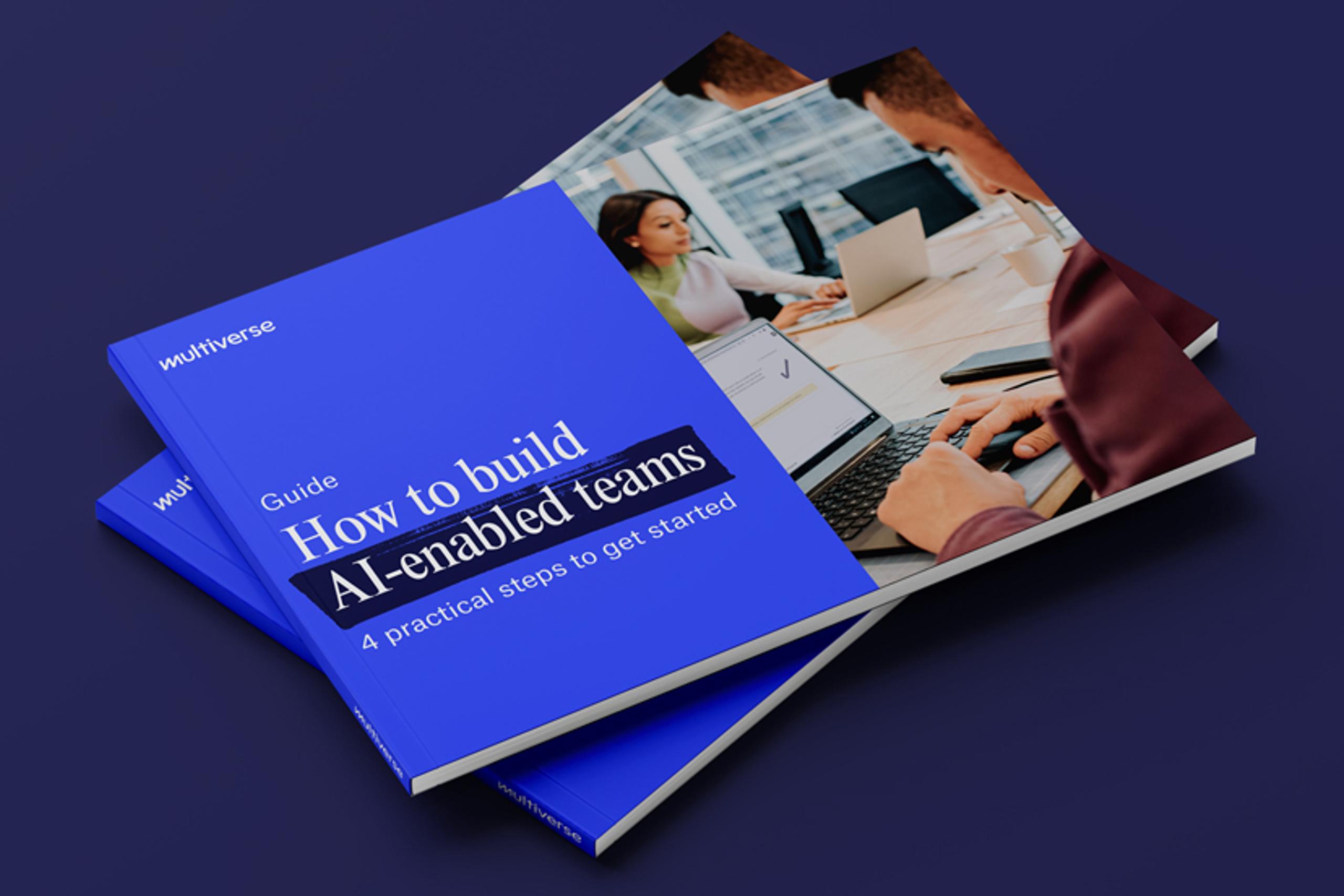Culture is often described as the glue that binds people together. And with all its promised benefits, AI won’t deliver without the right workplace culture around it.
Why? We know this because of the lessons learned from digital transformation.
One of the common reasons digital transformation initiatives(opens new window) fail is a lack of consideration for the "people dimension." Over the last 10 to 15 years businesses have learned and appreciated the importance of bringing people along with new technology.
The same principle applies to AI, and we see many similarities today with those early days of digital transformation. For example, business leaders see a chance for enhanced performance and growth with over two-thirds of leaders believing AI will improve productivity and customer experience (69%).
But challenges come with change management – and lessons from the past should be considered.
Workplace culture – built for its people – is crucial for success with AI, but there’s no switch to turn it on immediately. It needs nurturing, with time, effort and consistency.
In this article, we’re going to explore what a strong workplace AI culture looks like, and some suggested steps on how to establish it.
What is workplace AI culture?
Workplace AI culture is the integration of artificial intelligence technologies into an organization's operations, processes, and employee interactions. In a strong workplace AI culture, teams will constantly consider how AI can and should be used within the business, shaping the overall work environment and company values.
How to establish a strong AI culture
Building an AI culture requires careful planning, clear communication, and a commitment to responsible practices and continuous improvement.
Every employee needs to understand how AI is relevant to their role, how they can use it effectively, and crucially, how to use it responsibly. And, for leaders, it’s about fostering and nurturing this culture by regularly considering how AI plays into their business strategy.
Here are our five steps to building a successful workplace AI culture:
1. Understand your level of AI readiness
Around seven in ten (69%) of business leaders believe their organization will need different workforce skills to stay competitive in 2030 – according to Multiverse’s ‘Preparing for the AI revolution’ report.
In the same study we found nearly half of leaders (48%) say their business currently has significant skills gaps in key functional areas. Mapping these gaps to inform your approach can be included in an AI readiness assessment.
By looking at people, processes and technology you can understand areas of focus for establishing your workplace AI culture.
2. Build a network of AI champions in a ‘hub and spoke’ model to enable experimentation
Structure is important to help everyone understand their stake in AI – as well as to track progress on how AI is being used.
It becomes easier for an organization to show this in practice when using a hub and spoke model. A team of champions around the organization (the spokes) can channel information back to a strategic AI lead acting as the ‘hub’. The strategic AI lead must have authority and enough proximity to senior leadership to align the business’ strategic goals with the application of AI.
The supporting network of AI champions is effectively the frontline of change management. By placing these subject matter experts in each business function, it’s clear to every team who they need to speak to when they have an AI question. This group can act as the eyes and ears on the ground – spotting opportunities and working with the right people to develop a business case for AI.
3. Set positive expectations with clear AI policies and guardrails
Risk is an ongoing concern for leaders looking at AI – particularly data security.
Only around 21% of businesses have established workplace policies around employee use of Generative AI according to McKinsey(opens new window). So, being clear about what information can be shared on ChatGPT, for example, helps everyone understand the appropriate use cases for AI and rules of engagement.
As well as marking out the red lines, communicating clear boundaries means the average worker can understand the spaces where they can innovate and experiment with AI – setting a positive culture rather than a restrictive one.
4. Empower continuous learning and AI upskilling
Advancements in AI are happening at a lightning pace – it’s why 83% of businesses are moving quickly to implement workforce skills development on AI.
Building a culture of learning into your AI culture encourages everyone to understand the places they can improve, and access opportunities to grow.
Factoring in time for learning as part of everyday roles means there is space for experimentation.
Clear communication on your plans for AI implementation needs to go alongside any training and support to help employees adapt.
5. Measure impact – and share what you’ve learned
Measurement is important to support the experimentation element of your AI culture. Similarly to those early days of digital transformation, there can still be lots of hypothesizing about the impact AI may have as a whole or on individual processes.
Being clear with your employees on the impact you want to achieve, and the metrics you’re focused on improving, arms teams with the information to assess opportunities and make the case for future AI investments.
Take your first step in building a strong workplace AI culture
Book a consultation with our team of experts who can help you to build AI-enabled teams and build a strong workplace AI culture.





